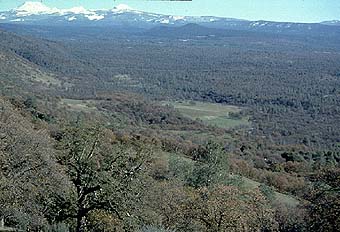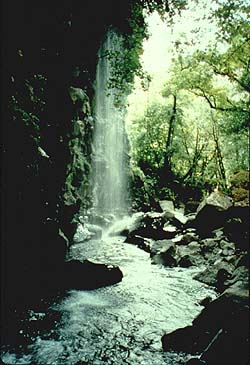

 |
 |
|
 |
The Battle Creek watershed, which has volcanic origins, is the furthest southern extent of the Cascade Province. As lava spewed from Mt. Lassen and flowed west into the Battle Creek drainage, old stream courses were buried. The bulge of basalt formed by repeated flows forced Battle Creek to split and the forks to diverged to the outer edges of the watershed. Today you can see that the North Fork and South Fork flow along the northern and southern margins of the watershed. |
| Large basalt formations
typically have many springs and the Battle Creek basin is no exception.
Water percolates quickly down through the porous lava flows but flows accumulate
in sub-surface fissures or lava tubes. In the case of Battle Creek, these
sub-surface flows follow old stream channels that have been buried by lava.
This is exemplified in the large spring flows that emerge from the cliffs
along the North Fork of Battle Creek in Eagle Canyon. Due to the large contribution
of water from springs, Battle Creek has the highest base
flows of any tributary of the Sacramento River between the Feather River
and Keswick Dam. High elevation meadows also contribute
modest amounts of water to Battle Creek through out the year.
|
 |
References
Ward, M. B. and W.M. Kier, 1999. Battle Creek salmon and steelhead restoration plan. Prepared for the Battle Creek Working Group by Kier Associates. Sausalito, CA . 157 pp. [1.4 Mb]